Growing menthol mint

Menthol mint is a popular plant with a high menthol content and is often found in garden plots. Gardeners appreciate this culture for its special properties, as well as unpretentious care and strong immunity.
Description
Menthol mint is a special plant variety that belongs to the group of perennial crops. The main difference between mint is its unique smell and taste, which cannot be confused with any other smells and tastes. Mint smells very rich. This property is due to the high content of essential oils. Key features of culture:
- root system - looks branched;
- the stem is straight with small cavities inside, which are formed as the mint grows;
- leaf plates - dark green, ovoid;
- inflorescences are small, purple;
- plant height - up to 1 meter under favorable growing conditions.
The above are the characteristics of the garden mint species. In wild plants, the indicators are slightly more modest. For example, the height of the stems does not exceed 40 cm.
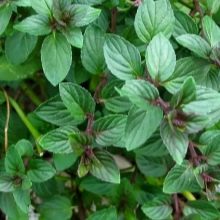
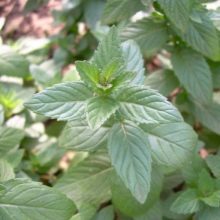
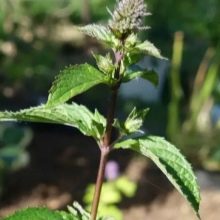
Peppermint is actively used in many areas. Among the common ones:
- cooking;
- medicine;
- cosmetics.
Such a demand for a plant with a strong taste is explained by its useful properties, as well as a pleasant taste and aroma. Peppermint can be found in many foods, drinks, medicines and even perfumes.
Mint is propagated mainly by cuttings. For this, shoots are used, on which 5 or more leaves have formed. They are pruned so that they can then be transplanted into fertile soil.

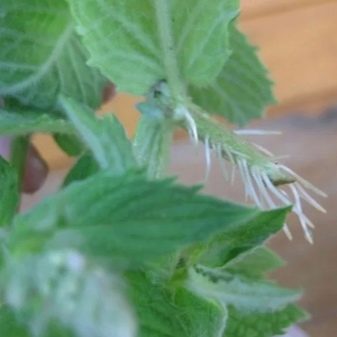
Also, mint propagation is performed by seeds. Planting seeds for seedlings is carried out mainly in early April. For this:
- the seed is taken without treatment, since the seeds are quite small;
- placed in previously prepared small-volume containers filled with a fertile mixture;
- watered abundantly, covered with transparent material and placed in a sunny place.
After 2 weeks, you can start planting the culture in open ground. It is better to transplant mint as it grows into fertile soils, soft and loose. If necessary, before planting, it is recommended to apply fertilizer to the ground and dig it up. Then the roots of the plant will receive nutrient components faster and begin active growth.
The groundwater level in the selected area should be low. Otherwise, you will need to take care of the drainage system, otherwise the plant will quickly rot. You can make drainage yourself with the help of available tools.
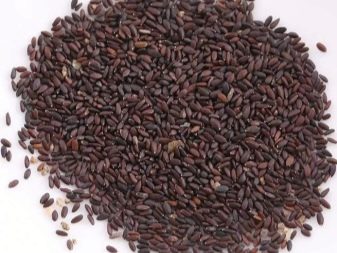
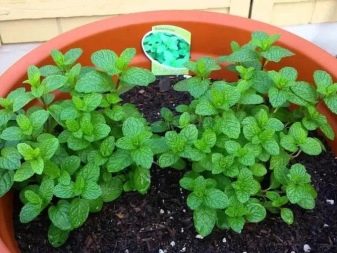
Care
Menthol mint is not particularly demanding to care for. Following simple recommendations will help to achieve active plant growth even in harsh growing conditions. It is worth considering in more detail the main points.
Watering
Do not overuse watering. So much water is needed so that the plant does not die from drought. You can determine the need for watering by crop growth. If the stems are actively striving upward, water should be added to the ground.
Separately, gardeners are advised to pay special attention to seedlings that require a little more water for active growth. Otherwise, they will not take root in the garden when transplanting.
Watering adult mint 1-2 times a week is enough. It is better to give preference to the evening hours so as not to burn the leaves of the plant.

Loosening
Mint grows well in loose and airy soil.Therefore, it is recommended to dig the beds after each watering in order to saturate it with oxygen and accelerate the flow of nutrients to the roots.
Loosening is best done with a special tool that you can buy at a gardening store.
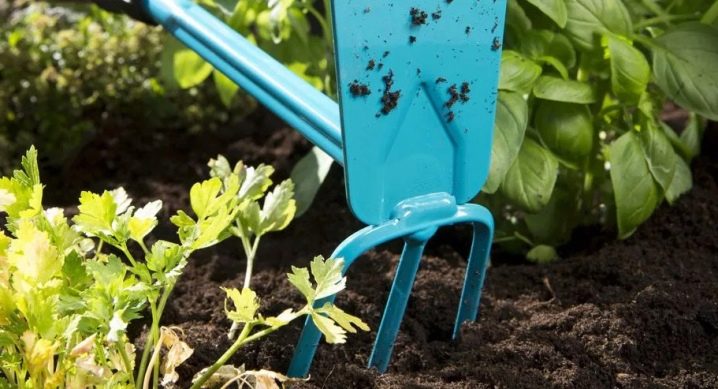
Weeding
One of the important procedures that requires timely weed removal. A large amount of weed prevents the mint from developing, and also leads to the spread of diseases and pests.
If the mint still does not grow after weeding, the top of the stem should be cut off. This will be enough for the plant to start actively growing.
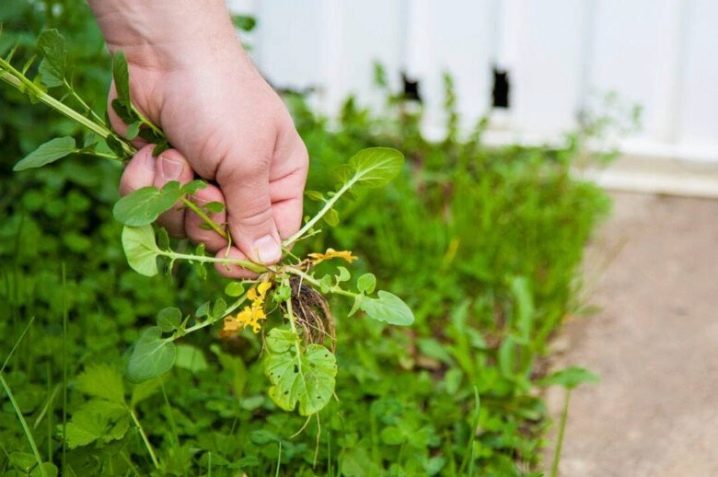
Diseases and pests
Despite the fact that mint has a strong immune system, it is often attacked by various diseases.
- Rust. The most common disease, accompanied by the formation of dark and rusty spots. Ignoring the disease will lead to the expansion of the spots and the death of the plant. Therefore, the infected mint should be pulled out and burned to prevent the rust from spreading to other stems.
- Powdery mildew. It appears on the leaves and stems of mint in the form of a white bloom, which in appearance resembles a spider web of small thickness. A special solution of sulfur will help to save the mint, with the help of which the elements of the mint are sprayed. Contaminated leaf plates should be removed prior to decontamination. In the fall, it is recommended to additionally dig up the garden bed at a depth of 20 cm.
- Fusarium, peronosporosis, anthracosis. Common fungal diseases that can cause plant death. You need to deal with them with the help of special tools that are sold in gardening stores. Before using drugs, you should carefully study the instructions.
Also, pests often settle on mint. Among the common ones:
- mint mite;
- flea;
- aphid;
- caterpillars;
- wireworm.

To prevent the attack of insects, you should plant the bushes far enough from each other, as well as carry out regular weeding of the beds, removing weeds. Additionally, gardeners are advised to water the mint leaves with a hose.
You should also take care of pruning the mint. The procedure will help make the crown more lush and bushy. Pruning is best done early in the season and in the fall, removing too long or infested shoots.
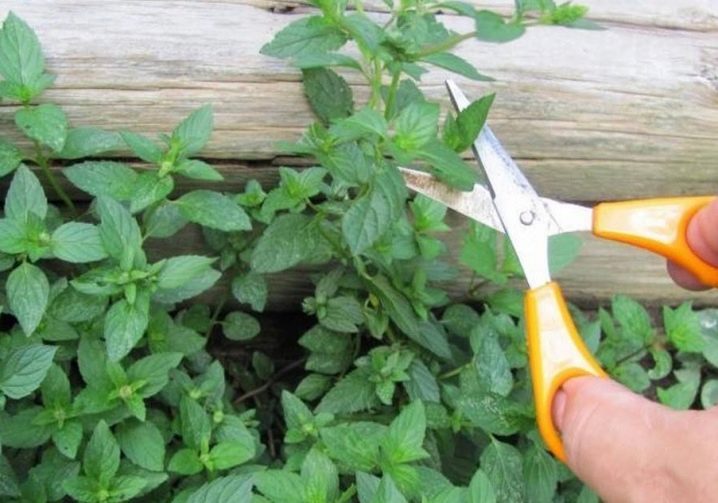
Collection and storage
You can collect the leaves of a fragrant plant when it rises to a height of 20 cm. Gardeners advise against cutting off the stems entirely. Can be collected in separate sheet plates, carefully cutting off the leaves. For this, it is better to use special garden tools. You can also pick the mint leaves by hand, but the plant is likely to break.
Many are wondering when is the best time to dry mint. The procedure is best done in early autumn. It is important to wait until the plant begins to bloom. It is recommended to cut the buds at the moment when they begin to bloom.
Leaf drying steps:
- The leaves are carefully cut, washed thoroughly and dried.
- Next, the dried leaves are spread in a small layer using a thick cloth or paper towels.
- Then the leaves are transferred to a dry place where there is no access to direct sunlight. Otherwise, the leaves will burn out under the influence of the sun.
If these recommendations are followed, it will be possible to achieve perfect drying of mint leaves, which will retain their properties and unique aroma.
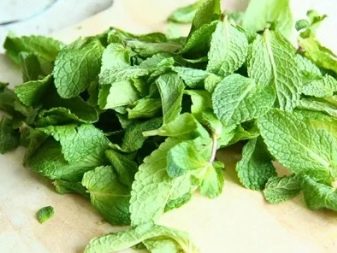
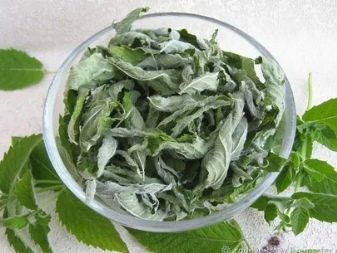













The comment was sent successfully.